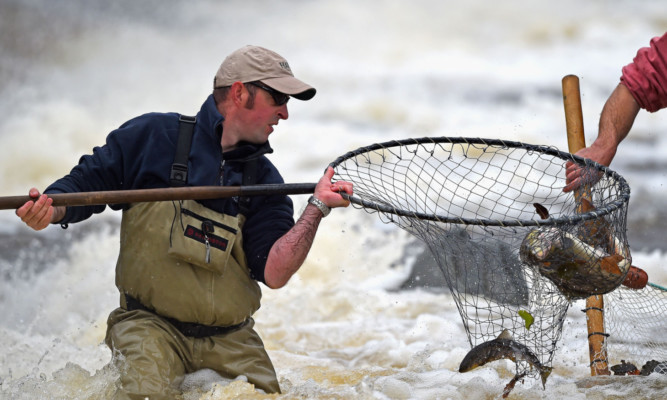Compulsory carcass tagging of every wild salmon killed in Scotland could be in place as soon as 2016.
The plan is part of a Scottish Government consultation which will move forward early in the new year and could place a blanket ban on killing fish except under licence.
Sporting and commercial interests have pledged to participate fully in the consultation, which may move forward against the backdrop of Scotland’s worst salmon catch on the nation’s rivers for 60 years.
The proposed steps would effectively introduce compulsory catch and release in the rod fishery sector, which already stands at 80% across the season.
Salmon and Trout Association (Scotland) chairman Hugh Campbell Adamson said: “We warmly welcome this bold move by Scottish Government.
“This announcement signals an acknowledgment and confirmation by government that our wild salmon stocks are under considerable pressure and that they need as much protection as possible from indiscriminate killing.
“If this proposal is adopted and a licensing system is introduced in 2016, it will go a very considerable way towards ensuring that Scotland honours its international conservation obligations, particularly under the NASCO treaty.”
George Pullar of the family-owned Usan Salmon Fisheries, Scotland’s largest netting company, said: “The main thing is that we want to engage with the process so that there is a reasonable outcome for all parties.
“We all want a sustainable fishery for the future for all sides, both rods and nets,” said Mr Pullar of the Montrose firm.
The sporting and commercial interests have consistently challenged each other over the conservation question, with claim and counter-claim over the impact on stocks.
Environment minister Aileen McLeod said: “Salmon is a protected species under the Habitats Directive and we need to ensure that any killing is sustainable.
“Greater protection and enhancement of our stocks will enable us to maximise the socio-economic benefits that flow from them.”
“The detail of our proposal will be set out in the consultation paper but we intend that carcass tagging for any salmon killed will form part of the package of measures.”
WORST YEAR SINCE 1950S?
There are concerns Scotland could be heading for its worst salmon year since the 1950s.
A dry early summer, August floods and warmer temperatures in Atlantic breeding grounds are being blamed as contributing to poor catch records which experts fear could fall well below 50,000 a drop of more than 15,000 from the previous season, which was also the worst for a decade.
Salmon and Trout Association (Scotland) director Andrew Graham Stewart said 2014 had been an “annus horribilis” on the nation’s rivers.
Official figures will be released in the spring on the total rod catch across the year, revealing where the tally will sit against the 2013 figure of 66,387 and a five-year average of 84,500.
Dr David Summers of the Tay District Salmon Fisheries Board said: “In terms of July, there hasn’t been as bad a month since the 1950s.”
The bleak picture is not confined to Scotland, with reports of similar difficulties in Norway and North America.
Sport fishing is worth well in excess of £100 million to the Scottish economy each year and supports thousands of jobs.
